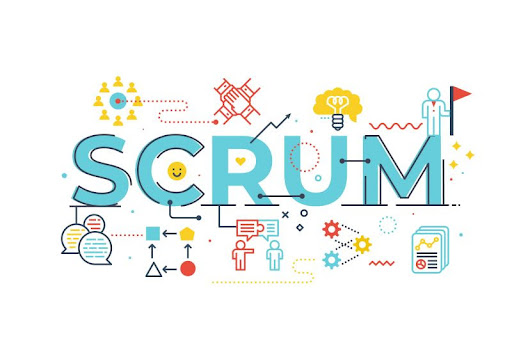
Scrum methodology in a nutshell: these are the most important elements of scrum
The scrum methodology is the most widely used methodology in agile project management. It is a framework that has evolved to solve simple, easy-to-understand and explicitly complex problems in an ever-changing environment. Although it is primarily used in software development, it is now increasingly implemented in other areas, such as service development or organisational management projects.
In this article, we will review what scrum is and clarify the most important related concepts and roles.
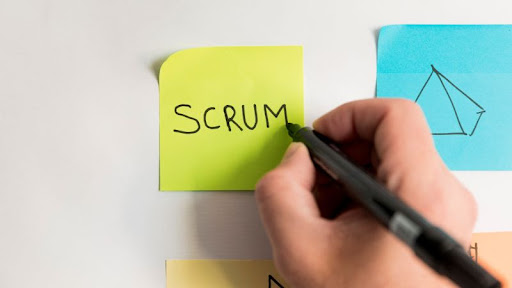
What is the scrum methodology?
Scrum is a framework that facilitates effective teamwork in complex product development. It is able to accept and manage unexpected events and changing requirements during development and facilitates effective adaptation. The result is more customer-centric, more efficient development, greater cost-effectiveness and reduced risk.
The scrum framework consists of pre-defined elements, all of which serve a specific purpose and are necessary for the methodology to work effectively. The framework is described in a code of practice, the Scrum Guide describe.
The main elements of scrum:
- The scrum team and its roles
- Ceremonies
- Products
- Rules
The term scrum is derived from rugby, and the methodology is likened to a rugby training session, where team members run and pass the ball between each other. In practice, this means that a small group of professionals with expertise in different areas work together in parallel at all stages of development. This is a big difference from the traditional waterfall method of project management, which is more like a relay race, with different teams of experts working on each phase of development.
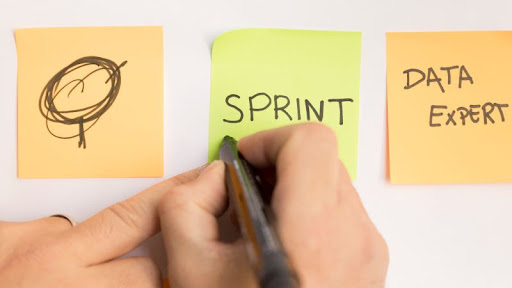
Elements of the scrum methodology
At the heart of scrum is the scrum team. Various roles, events, work materials and rules are defined around this. Work is done in 1-4 week iterations, in sprints. During the sprints, a working, presentable product part, an incrementum, containing some functionality, is created and presented to the customer at the end of the sprint. Finally, the product is assembled from these increments.
Let's see what the key concepts mean!
The scrum team and its roles
A scrum team is a small self-organising team, which means that the team organises its own work autonomously. It is important that team members work in the same place and are able to communicate verbally with each other.
Of course, the situation during an epidemic does not always allow this, as we wrote in our article 8 practical tips for scrum masters in times of a pandemic.
The scrum team consists of the developers, the Product Owner and the Scrum Master. The 2020 Scrum Guide update states that these actors are all part of the team and are jointly responsible for the results. But what do these roles mean?
Product Owner
The Product Owner represents the customer during development, and is responsible for ensuring that the team focuses on the tasks that are really important to the business, and thereby maximises the value created.
Main activities:
- Constantly communicating with the customer and expanding the Product Backlog with the customer's requirements (Epic, User Story)
- Manage the Product Backlog in such a way that the items in it are clear and transparent to everyone, and the information is sufficient to work effectively
- Prioritise items according to their business value and the investment required to realise them. In estimating the latter, the development team will support
For the Product Owner to be successful, it is essential that his or her decisions are respected throughout the organisation and that no other external sources are directly involved.
scrum master
The primary task of the Scrum Master is to promote the Scrum methodology itself and to support its operation. He or she helps the team to understand the values and rules set out in the Scrum Guide and to apply them as effectively as possible in practice.
The Scrum Master is a servant support leadership role with the ultimate goal of maximizing team performance, removing obstacles to work, and optimizing interactions with external stakeholders. This requires a particularly complex activity:
- Agile/lean expert: helps you understand agile values
- Facilitator: helps set the operational framework, moderates meetings, administers, documents
- Coach: helps team members to function and supports organisation and team interactions
- Obstacles: removing obstacles to progress
- Teacher: helps with the introduction of Scrum and other methods
- Mentor: helps to customise Scrum by keeping the essential elements
In practice, it is often the case that someone who has been in a different role is appointed as Scrum Master. We recommend our article "I have been appointed as a Scrum Master, what should I do?
Scrum Development Team
The development team is responsible for making the product. It is a small (3-9 people), self-organised and cross-functional team, which means that the team includes representatives from all the disciplines needed to successfully develop the product. The goal of the development team is to have a working, presentable, potentially deliverable increment at the end of each sprint. These increments are selected from the items in the Product Backlog at the beginning of the sprint.
Other stakeholders
There are other stakeholders in product development who, although not an integral part of the scrum methodology, need to be continuously involved in product development. These stakeholders include product users, business stakeholders and managers.
Ceremonies of the scrum methodology
Scrum events are pre-defined meetings that provide a framework for product development.
Sprint planning (sprint planning)
Prior to each sprint, the sprint planner will meet with you to select the tasks to be completed during the sprint from the Product Backlog. This is a joint activity between the Product Owner and the Development Team, where the time needed to complete the tasks is estimated and a promise is made to complete the tasks. It aims to:
- compile the Sprint Backlog (the sprint to-do list)
- a plan to implement it and to present the completed increments
- and the team is committed to implementing the plan
The duration of sprint planning varies, depending on how many weeks the sprint consists of. Each week should take about 2 hours of planning, so for a 2-week sprint, the sprint planning meeting should take about 4 hours.
Sprint planning is critical to product development, as explained in our post on the 8 steps of sprint planning.
Daily Scrum or Daily Stand-up
This is a short, daily status meeting, lasting up to 15 minutes, aimed at creating focus and coordinating tasks. The following questions should be answered by each participant:
- How have I helped you reach your sprint target since the last meeting?
- What do I plan to do before the next meeting?
- Are there any factors that are preventing me from doing my job?
Sprint Review, Demo (Sprint review)
At the end of each sprint, an overview of what was (and was not) completed during that sprint is given. The completed working increments are also presented to the Product Owner and other stakeholders. The Product Owner is responsible for receiving the completed deliverables. Typical duration is 2-4 hours.
Sprint Retrospective (Retro, retrospective)
The purpose of this often (and wrongly) neglected event is for team members to evaluate the sprint, give their opinions and make suggestions for improving workflow. Its low popularity is due to the fact that people are less inclined to talk about themselves and their mistakes. Developed self-reflection is needed to learn lessons. At the end of the event, concrete actions should be formulated to improve cooperation from the very next sprint.
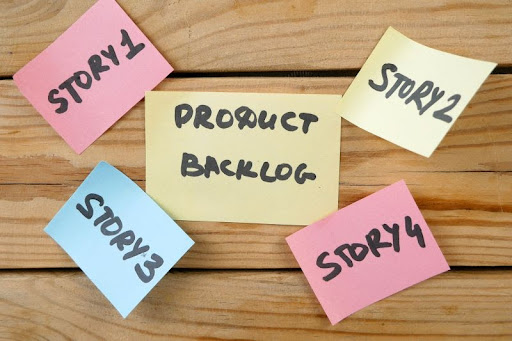
The Scrum methodology products (Scrum Artifacts)
The Scrum methodology working papers facilitate product development and progress tracking.
Product Backlog (product requirements list)
This is where the high-level requirements for the whole product and their specifications are defined. It is managed by the Product Owner. The Product Backlog should include:
- The main functions of the product and the customer's wishes and ideas related to it
- Estimates of the business value of each element and the expenditure required to implement it
- Each element should be ranked in order of priority
Sprint Backlog (Sprint to-do list)
This working document describes what features and how the team will build them during the sprint. The tasks are broken down into subtasks that typically take 4-8 hours to complete. This makes it clear to everyone what needs to be done and allows team members to select the subtasks that are right for them based on their priorities, needs and expertise.
Tools for tracking progress
Although the use of these tools is not mandatory for scrum to work, they provide useful information on performance and progress. The most common tools are:
- Sprint Burndown Chart: a graph, updated daily, showing how much of the sprint to-do list is left.
- Burnup Chart: shows the number of tasks completed and the number of tasks on the task list in a graph
- Velocity: team's delivery speed, showing the approximate amount of tasks the team can deliver in a sprint.
Summary
Thanks to its simplicity and flexibility, the scrum methodology is becoming more and more common in everyday business practice, and is already being used successfully in many industries outside software development. However, this simplicity can often be misleading: although the basics are easy to learn, it requires a lot of experience and expertise to master.
If you need help, our agile coaches, trainers and consultants with an active development background as certified Scrum Masters and Product Owners can provide practical solutions and support.
Want an internationally recognised agile qualification?
Looking for a hands-on programme where you can experience the most common challenges of the Scrum Master role?
Contact us for more information!
info@promanconsulting.hu
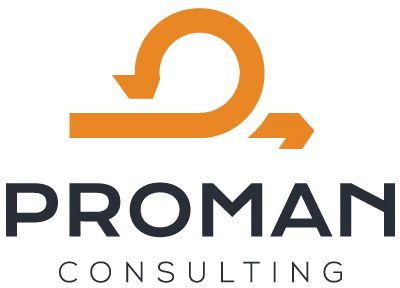
 Designabc
Designabc